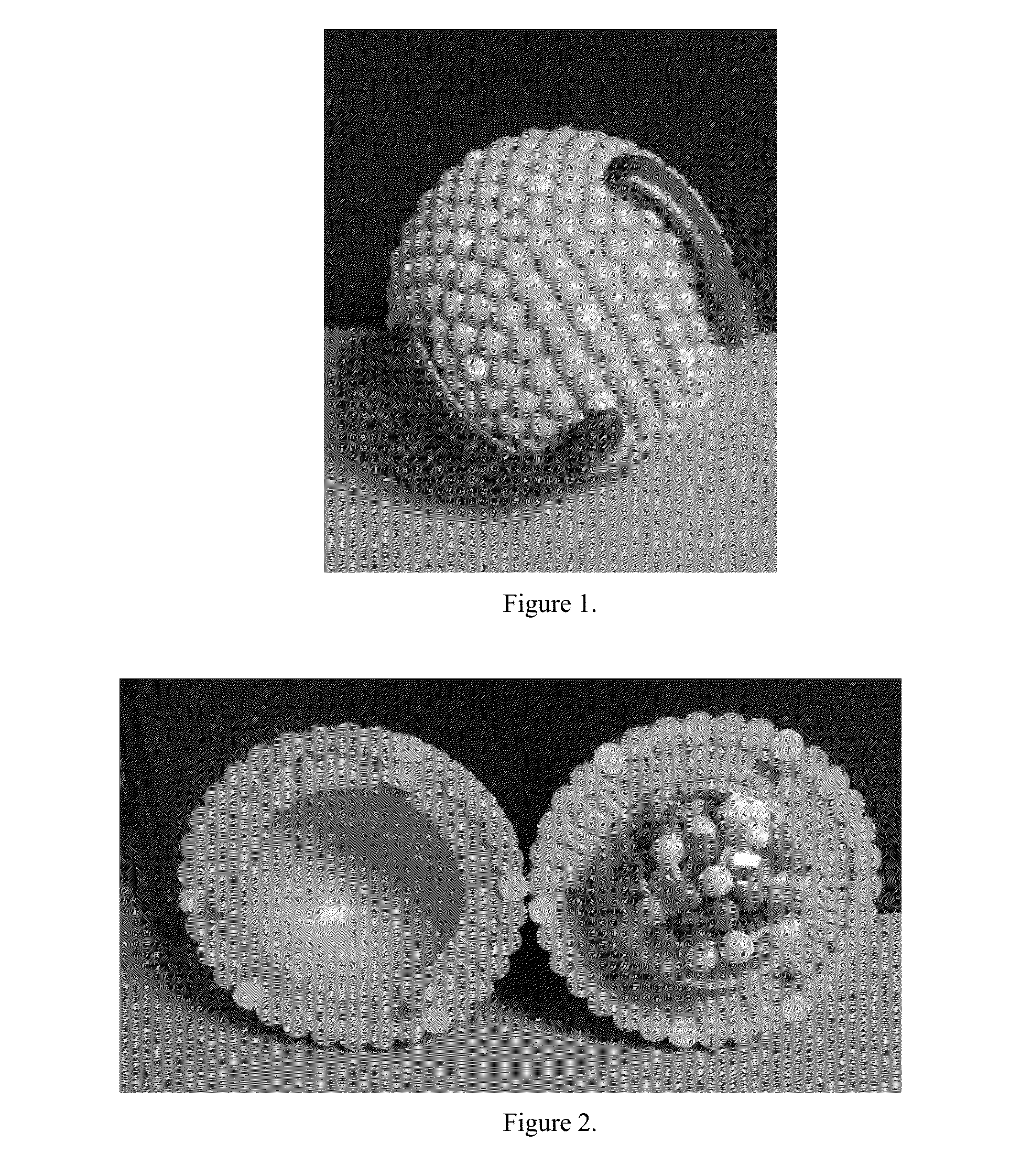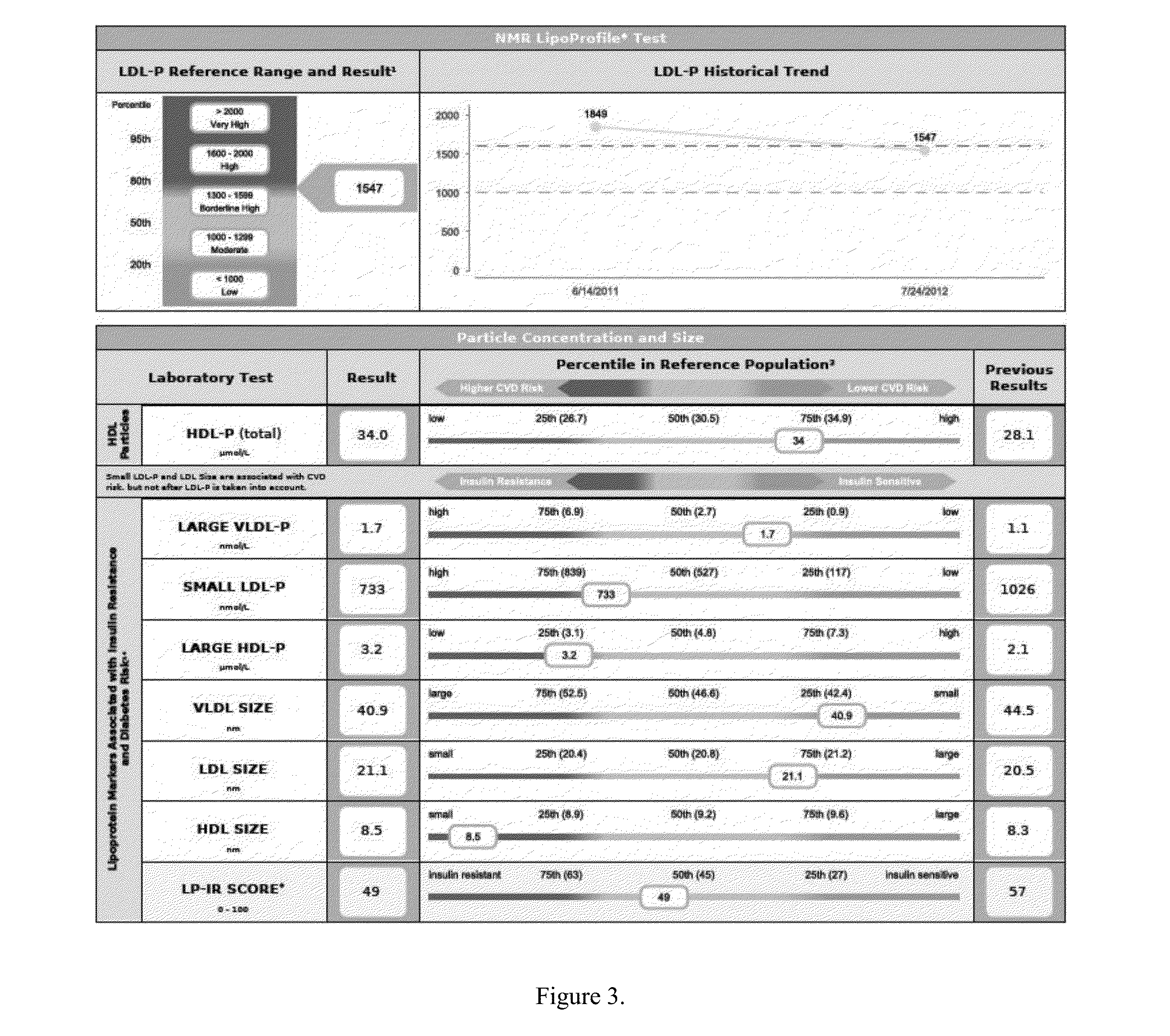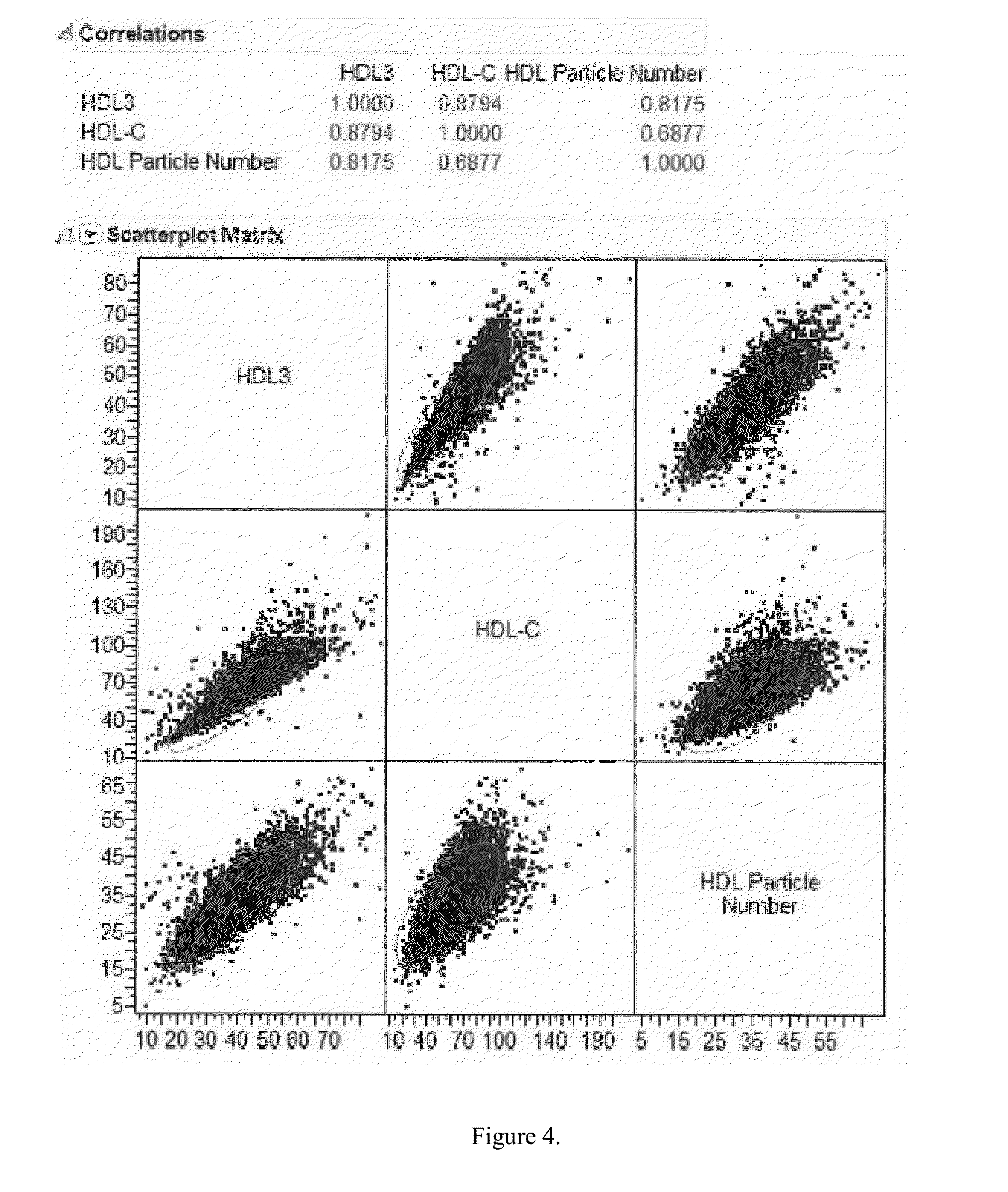System and method for assessing quanitites or sizes of lipoprotein particles from lipoprotein particle compositions
a technology of quanitites and particles, applied in the field of system and method for assessing quanitites or sizes of lipoprotein particles from lipoprotein particle compositions, can solve the problems of affecting data accuracy, data does not compare well with the accuracy of data generated by other techniques such as gel electrophoresis, and nmr sizing and particle counting may not be reliable, so as to improve clinical decisions, reduce cardiovascular risk, and save time and cost
- Summary
- Abstract
- Description
- Claims
- Application Information
AI Technical Summary
Benefits of technology
Problems solved by technology
Method used
Image
Examples
Embodiment Construction
[0019]The first step of this invention is to contact a biological sample and manipulate the sample according to various separation strategies known to those skilled in the art to obtain a pure or reasonably pure amount of a given lipoprotein species or sub-species.
[0020]Previous practice was to then determine total cholesterol content of the lipoprotein species by precipitation; this is a 2 step process in which the sample is first subjected to cholesterol esterase and then cholesterol oxidase. This liberates all cholesterol from the particles for measurement.
[0021]In this invention, the main concern is FC or PL in the phospholipid particle membrane, since only FC and PL have a stoichiometric relationship with both particle size and number. Therefore when the PL or FC content in a sample has been determined, and the other can be calculated. The general description of the method of determining free (or non-esterified) cholesterol content of the lipoprotein species is by precipitation...
PUM
| Property | Measurement | Unit |
|---|---|---|
| diameter | aaaaa | aaaaa |
| diameter | aaaaa | aaaaa |
| time | aaaaa | aaaaa |
Abstract
Description
Claims
Application Information
 Login to View More
Login to View More - R&D
- Intellectual Property
- Life Sciences
- Materials
- Tech Scout
- Unparalleled Data Quality
- Higher Quality Content
- 60% Fewer Hallucinations
Browse by: Latest US Patents, China's latest patents, Technical Efficacy Thesaurus, Application Domain, Technology Topic, Popular Technical Reports.
© 2025 PatSnap. All rights reserved.Legal|Privacy policy|Modern Slavery Act Transparency Statement|Sitemap|About US| Contact US: help@patsnap.com



